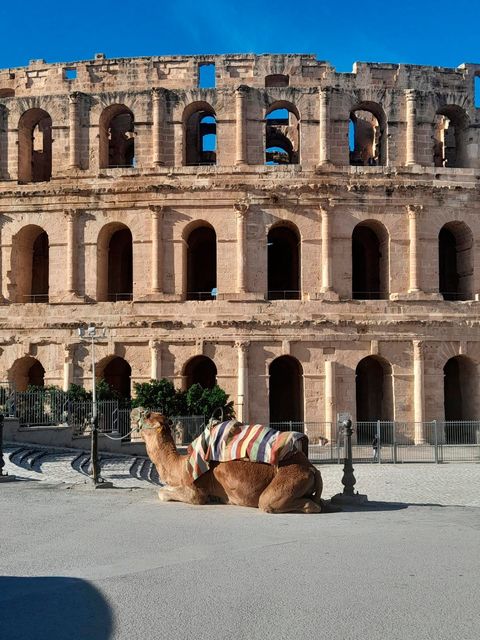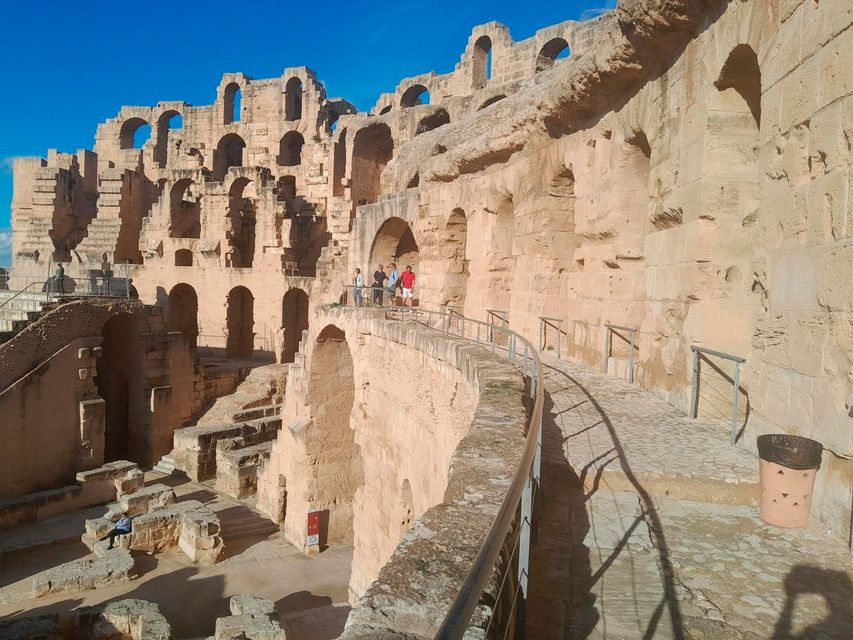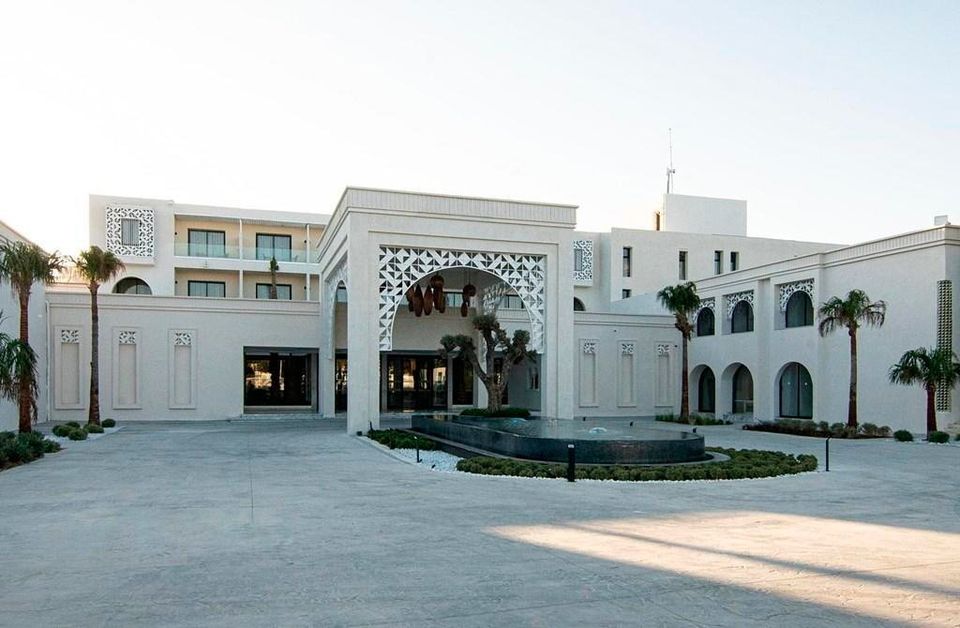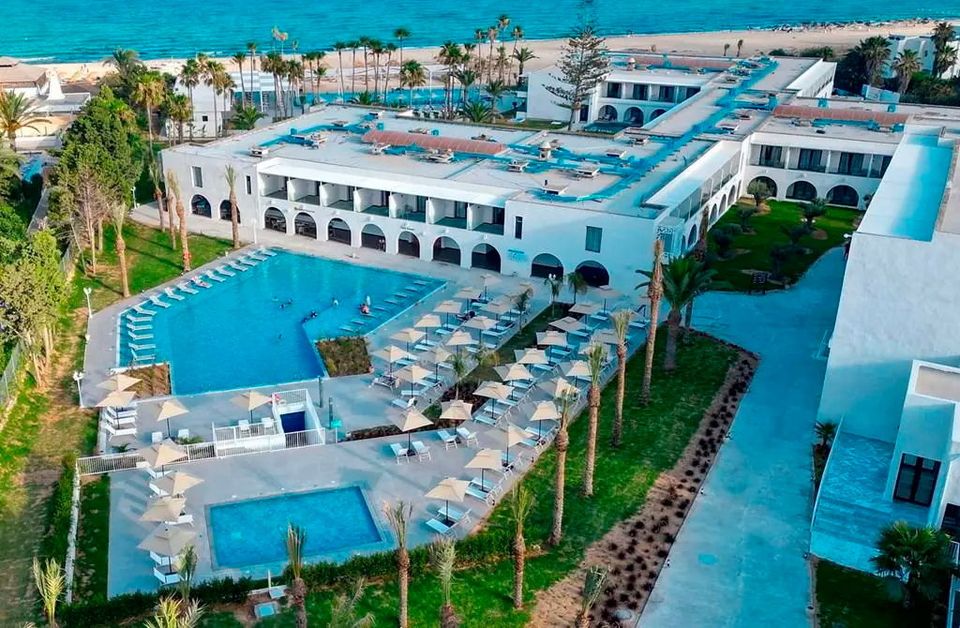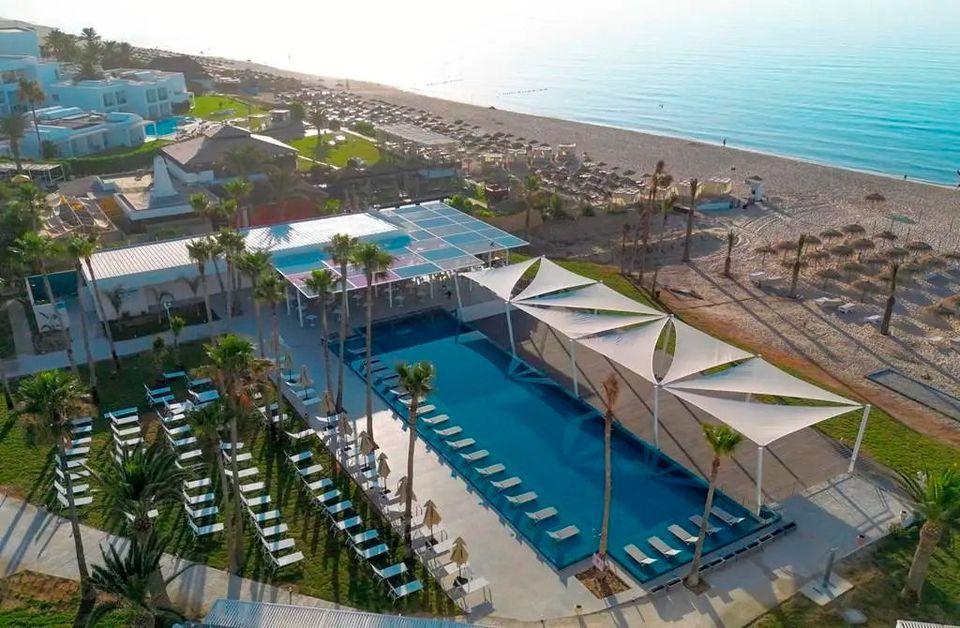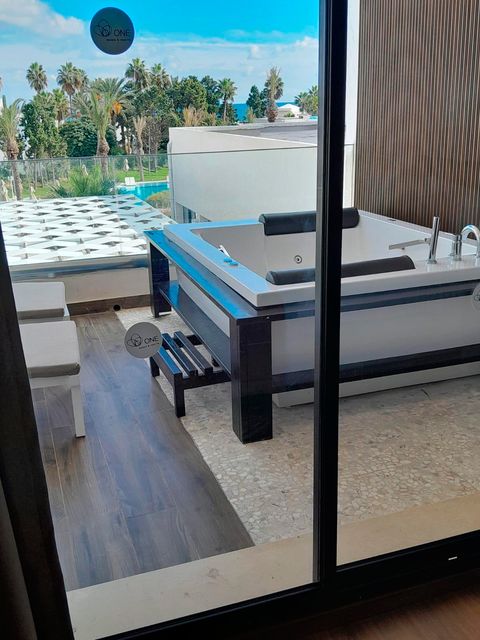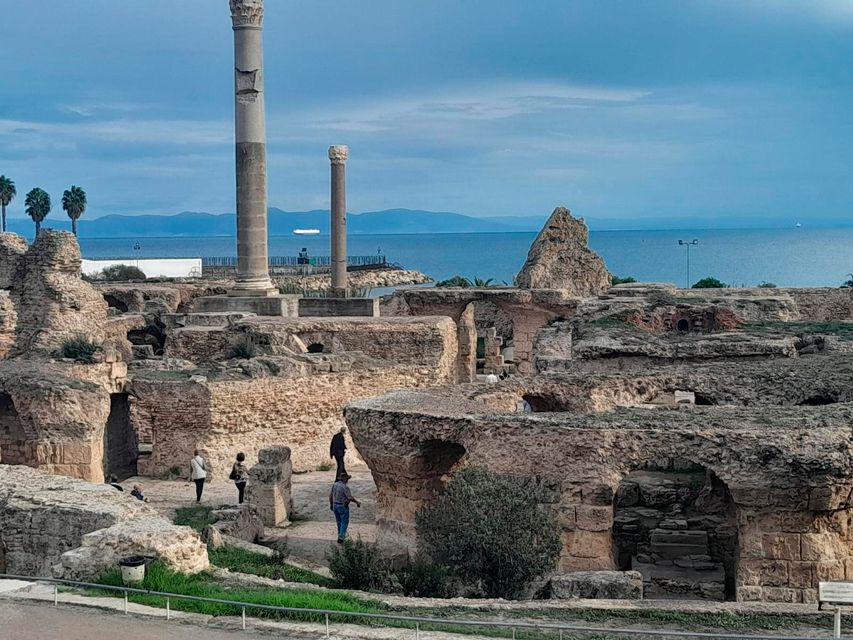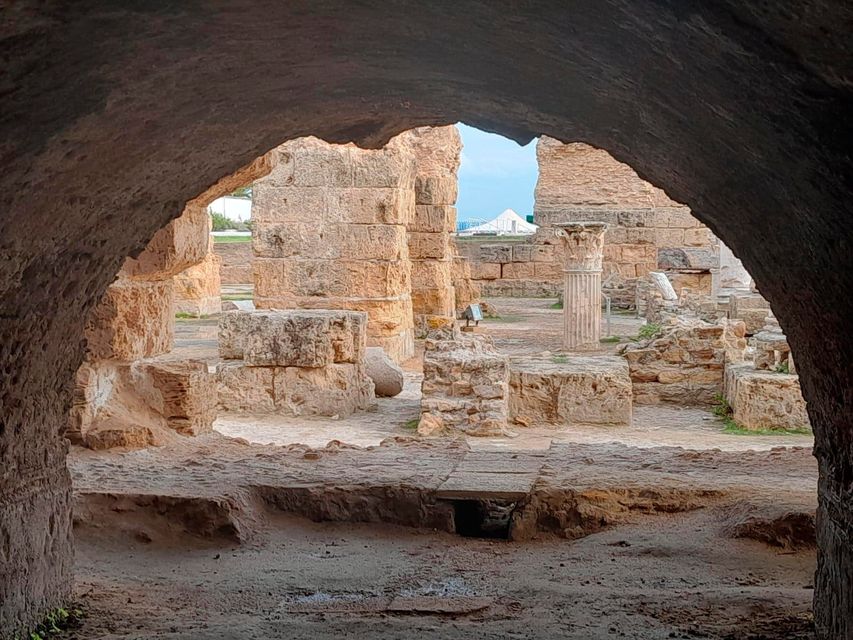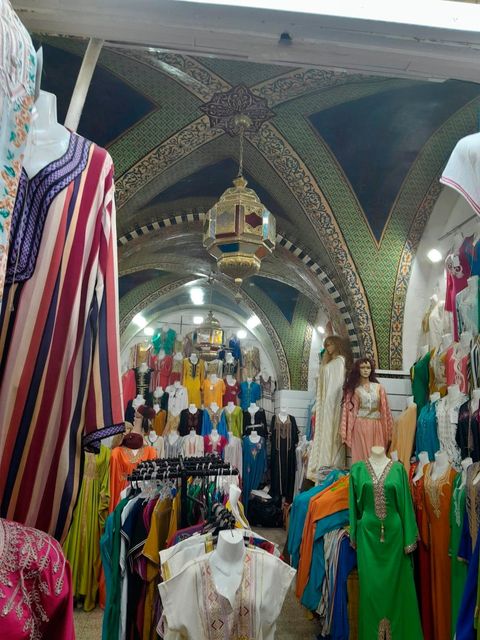Tunisia, a land full of surprises. Arriving in the aptly named town of El Jem, an hour from the tourist destinations of Monastir and Sousse with their array of four and five star resorts, it’s a typical bustling Tunisian market scene.
A camel sits waiting to spring its tourist trap but in November, the numbers are lower. All the more freedom to explore the stunning, scene-stealing backdrop.
Built by the Romans sometime between the year 200 and 300, stands an amphitheatre to rival the Colosseum of Rome where once more than 35,000 gathered to watch gladiators duel, chariots race and to satisfy their lust for bloodshed as entertainment.
And it’s better preserved than its Italian rival in Rome despite that freedom to wander through the underground tunnels where gladiators awaited their fate and tigers awaited their meals.
The Amphitheatre of El Jem
Tunisia is a north African country but with the feel of a Mediterranean one. It does, after all, boast hundreds of miles of coastline and sandy beaches caressed by the warm waters of that sea.
Far from the desert landscape you would imagine, and despite rainfall being in very short supply, it’s green.
All along the main A1 road running north to south through the country, olive trees stretch as far as the eye can see — the reason why Tunisia was such a prized asset for empires of the past, including that of Rome.
It’s a land where the influence of Europe and Africa merge. Also once a French colony, the capital of Tunis is traditional Suk one minute, unchanged for centuries, Parisian boulevard the next.
It’s a city where you have to constantly remind yourself where you are.
And while we’re dishing out the surprises, here’s another couple.
Leaving Belfast International Airport, easyJet can have you soaking up the sun, culture and a slice of north African flavour in around three-and-a-half hours. It’s easier to reach than the Canary islands, and with prices on flights starting at less than £30 per person, it has all the ingredients to change your thinking on a winter escape to the sunshine where temperatures are warm but not overpowering.
Visitors are dwarfed by the scale of the amphitheatre, still largely intact at El Jem in Tunisia
The locals say it’s cold as they gather in their traditional cafe haunts; in hostelries where tradesmen barter for business; or in chic tea shops, the preferred social hub for women here.
Arriving in from a bleak Northern Ireland winter, it’s really not cold at all.
With easyJet Holidays you can add your choice of hotel. Many are four and five star and situated in Monastir or Sousse.
We’re staying in Hammamet — smaller, but closer to easyJet’s arrival airport at Enfidha.
One Resort Premium, situated on the southern shores of the Med
One Resort Premium is our base, 226 rooms of pure indulgence. Luxury and relaxation is what Tunisia prides itself on for the visitor. All-inclusive is the only way to go. And with hotels only too ready to cater for your every whim and fancy, there’s hardly a need to leave when there’s lying by the infinity pool, lounging on the private beach, soaking up the (all inclusive) drinks in the US-style sports bar, and indulging in a spa treatment to tempt you here.
An aerial view of One Resort Premium, Hammamet, Tunisia
And should you feel peckish, there’s dining at the poolside snack bar, the round-the-clock diner, or two a la carte restaurants (one Italian, one Argentinian).
One Resort Premium’s beachside location
It would, though, be a shame not to venture out as there’s plenty to delve into away from the main resort.
Some rooms at One Resort Premium come with their own balcony spa bath
Just over an hour away lies Tunis, the nation’s capital. It’s our first port of call, home to the National Museum of Bardo, the historian’s paradise sitting side-by-side with the nation’s main parliament buildings.
Housed in a former Beylic palace near the old city of Carthage, the museum is Tunisia’s oldest and most important.
The Roman baths at Carthage, on the edge of the Lake of Tunis
Lavish halls once housed emperors and their (usually) four wives and display artefacts belonging to every era of Tunisian history.
The main attraction, though, is the staggering number of ancient mosaics that grace its walls and floors.
The Roman baths in Carthage, which you can walk around at your leisure
Collected from Roman and Byzantine sites in Tunisia, the exceptionally well preserved mosaics occupy more than half of the museum’s display space, the world’s largest collection which give a unique insight into the Roman lifestyle.
From a mightily impressive step into the past of Tunisia, a quick jaunt across the city lands us right in the past-dominated present, where the centuries-old medina walls guarding this old and mighty Islamic city may look crumbling, but have stood the test of time.
The ancient Medina quarter of Tunis bustles with markets
It’s home to the sights and sounds of the real Tunis, family-run shops where the scents of the finest perfumes — destined for the famous houses of Milan, Paris and New York — mix with rich intoxicating spices and incense.
Stopping for a coffee, it comes in a thimble-sized cup. That’s more than enough such is the potency, though it’s strange to be in a cafe in such an old, traditional part of Tunisia with TV screens showing the highlights of Premier League football.
Such is the variety of cultures that combine to form the rich tapestry of Tunisian life.
Passing through the French-influenced boulevards locals like to call ‘the little Champs Elysee’, it’s on to Carthage, just north of the city centre.
Once capital of the Punic empire, the most important trading city in north Africa and laid waste by the Roman empire, the relics of that Roman empire still stand — and you’re free to wander around the ruins of the Roman baths and theatres that once stood in all their glory. Overlooking the Lake of Tunis, staircases, walls and columns still stand.
History sweeps over you. It’s a remarkable testament to the power of the Roman empire and efforts of modern-day Tunis to preserve the past.
But we’re not done just yet. One more treat awaits. Sidi Bou Said could easily be missed, accessed through a maze of tight and winding passages, but missing it would be a shame.
It’s almost exclusively blue and white themed, and decorated by the most delicious looking purple flowers of Bougainvillea vines draped from houses and walls.
This is the millionaire’s playground, where homes are owned by the rich and famous of Tunisia, former politicians, its elevated position overlooking the yacht-filled harbours and deep blue sea below.
Once more this country of contrasts is apparent, the town far removed from the spice-addled medinas where every cat has its own door for feeding and every market stall has been handed down from father to son to grandson through the generations.
A lot of history and Tunisian life was squeezed into a single day, but there was still time for an Argentinian meat feast back as base camp, One Resort Premium, where one-by-one prime cuts, skewered and ready for the knife, were escorted to the table for what turned out to be an eating test of (delightful) endurance.
And honestly, it was something of a welcome relief as tuna and couscous seems to be the staple traditional diet everywhere in the country.
Well fed and watered in One Premium’s sports bar, the next morning was one of delightful relaxation.
One step off the room terrace and it was into the swim-up pool.
Some 200 yards away and you’re up to your neck in the Med after a stroll across the beach.
But there’s further treat… dragging yourself away from the lure of the infinity pool and the range of on-site spa treatments, an unexpected experience awaits in the form of another step back to the time of the Roman empire.
El Jem is a town famous in Tunisia for its low cost and perhaps not 100% legal goods — there are police stopping cars as they leave — but that’s not why around three million tourists flock there every year.
Standing proud among the ramshackle shops and cafés are the remains of the third largest amphitheatre the Romans ever constructed, better preserved than even the grand version in Rome itself.
And you’re free to roam the archaeologist’s paradise dating back to the third century, explore the dark tunnels underneath where slaves were chained, or simply sit back and marvel at the sheer majesty of it all. Camel rides come at an extra cost.
Tunisia embraces its past as an imperial colony like few other countries, all the more reason to embrace it in a present where along the back roads the monstrous hedgerows of cacti reach up and out, creating laneways Stephen King would be proud of as herds of goats are ever bemused at the sight of a passing vehicle.
Rural Tunisia contrasts so vividly with the bridges and highways that span the vast Lake of Tunis, on the banks of which the capital city has grown, a port that was once the trade gateway to Africa and still a working port where, much like Belfast, the cruise industry has found a welcome home.
It is ‘El Jem’ of a destination where sun-kissed beaches skirt the north African coastline and where, behind the tourist hotspots of Monastir, Sousse and the smaller Hammamet, the real Tunisia is visible in all its glory, offering much more than a glimpse of a past filled with grandeur.
You can walk among it all.
Travel factfile
easyJet flies from Belfast to Enfidha all year round, with prices starting from £30.13 per person, one way.
easyJet holidays offers seven nights at the 4* One Resort Premium in Tunisia on an all-inclusive basis for £334 per person* including 23k of luggage per person, transfers and flights from Belfast International on March 25, 2025. *Price includes JANSALE promo code
One Resort Premium is a jewel nestled beside the Mediterranean Sea in Hammamet Tunisia. The property has 226 rooms and embodies luxury and relaxation to offer guests an unforgettable stay
Tours and experiences can be booked via Musement. Select from thousands of excursions and activities, across easyJet holidays’ beach and city destinations including Carthage, Sidi Bou Said and Medina guided tour, Tunis shopping tour and Kairouan and El Jem guided tour.
Visit: https://www.easyjet.com/en/holidays
